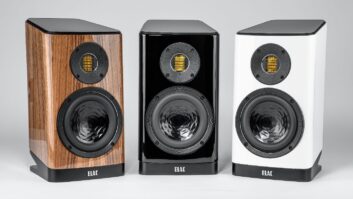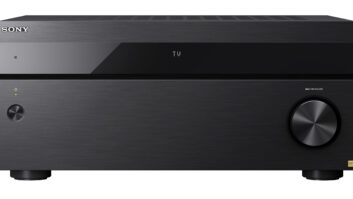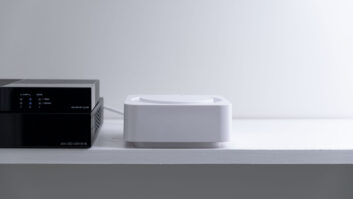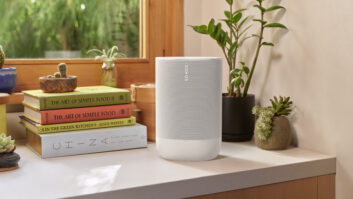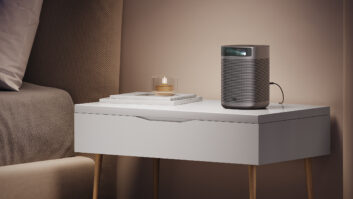

As DIY home control and IoT continue to encroach into our territory–both in terms of availability and capability—I’ve been thinking a lot about where the boundaries really lie between that arena and our own. Setting aside the experience and expertise that integrators have over the average DIYer, I’ve found myself traveling down a few trains of thought that led to dead ends. It isn’t necessarily customizability that sets them apart–at least not anymore. I can do things with my dad’s SmartThings system that would have almost seemed like science fiction to me only eight or nine years ago.
So, what is it? What marks the border between these two territories? I might change my mind on this tomorrow, but ask me today and I’d say what sets the custom market apart is the ability to better target the scale of an individual home, in stark contrast with the one-size-fits-all approach of DIY gear. It’s increasingly becoming the case that custom solutions are aiming at a variety of Goldilocks zones for a wider variety of homes: not too big; not too small. Just right for whatever job you’re working on.
The latest example of this is Lutron RA2 Select, a new offering from the royalty of lighting control that fits pretty comfortably smack dab in between its existing Caséta Wireless and RadioRA 2 lines. I won’t dig into every single distinction between the three systems, but in short, whereas Caséta Wireless supports up to 50 devices and RadioRA 2 supports up to 200, RA2 Select maxes out at 100 devices per project.
For local lighting controls, it relies on Maestro-style dimmers and switches–same as RadioRA 2–and for keypads and zone controls it’s limited to Pico–same as Caséta. RA2 Select’s support for auxiliary repeaters also sits at four, which is halfway between RadioRA 2’s eight and Caséta’s none, and by the time you read this, support will be added for occupancy sensors.
In terms of programming and installation, RA2 Select doesn’t split any differences. Programming is handled via the same mobile app used to set up Caséta, and in contrast with RA2 programming via the Essentials desktop app, it’s a decidedly more straightforward, intuitive affair–not to mention a much quicker one. If not for the fact that I had to go around the house and factory reset every dimmer, switch, and lamp module before adding them to the RA2 Select Main Repeater (an adorable and tiny little IP-connected device that can be hidden pretty much anywhere), setup of all 15 loads in my home would have taken maybe five minutes, tops.
Adding a dimmer, switch, or lamp module via the app requires little more than holding the button on said device for a few seconds, then selecting its room and lighting type from the app. Examples of this include, say, Kitchen>Ceiling Lights>Main, although you can opt for more specific applications in the “Other” tab, including task lighting, ambient lighting, decorative lighting, or accent lighting. Dig into the settings for each device after setup and you can also adjust high and low trims (though you’re limited to 65-percent minimum on the high end and 45-percent maximum on the low end). Tweaking the default brightness level to which a load jumps with a single-tap is handled via the Raise and Lower buttons on the Maestro-style dimmers themselves.
Integration of RA2 Select is wonderfully straightforward, although in the case of Control4, the actual RA2 Select driver isn’t quite ready for primetime just yet. Upon loading Composer Pro, I noticed that the Control4 software recognized the RA2 Select main repeater via Simple Device Discovery Protocol but didn’t have a driver available. For now, though, either the RadioRA 2 or the Caséta driver will work—so no complaints there.
A few things to keep in mind when it comes to integration is that you do have to enable Telnet support from within the app (duh), and you should set a static IP address for the main repeater (that really boils down to nothing more than sliding the DHCP switch to the off position). The neat thing is that when you generate an integration report containing device IDs, it gives you the option to email the results straight from the app. That’s super handy.
Of course, it should be pointed out that I’ve gone down the road from RadioRA 2 to RA2 Select exactly backwards. Never are you going to have a client that needs to migrate from the former to the latter. The upgrade path from the latter to the former may be something you experience, though, if you ever run into a large home in which the owner wishes to start with a more modest system, then gets the upgrade bug at a later date. The same dimmers and switches and shades will still work, making the upgrade much less of a hassle.
That, in my opinion, increases the value of RA2 Select by quite a bit. And mind you, I’ve only lived with Select for a few weeks now, so I can’t really speak to its long-term reliability and stability as compared with RadioRA 2–but so far, so good. And it even manages to do a few things my old system couldn’t do easily, like geo-fencing, which is ridiculously simple to set up and program via the Lutron app.
As my wife and I were driving to dinner last night, my phone popped up a notification that I had left my bedside lamp on in our rush to leave the house. The missus leaned over from the driver’s seat and said, “That’s new! How long did it take you to program that?”
“No time at all,” I said. “I just poked one button.”
“Cool!” she replied. “Could you get it to turn on my office lamp when I come home?”
“Yeah, but you could do it yourself just as easily. It’s all done via the app now.”
“That’s neat and all,” she said, after a bit of a pause. “But I’d really rather have you do it. You’re the expert.”
